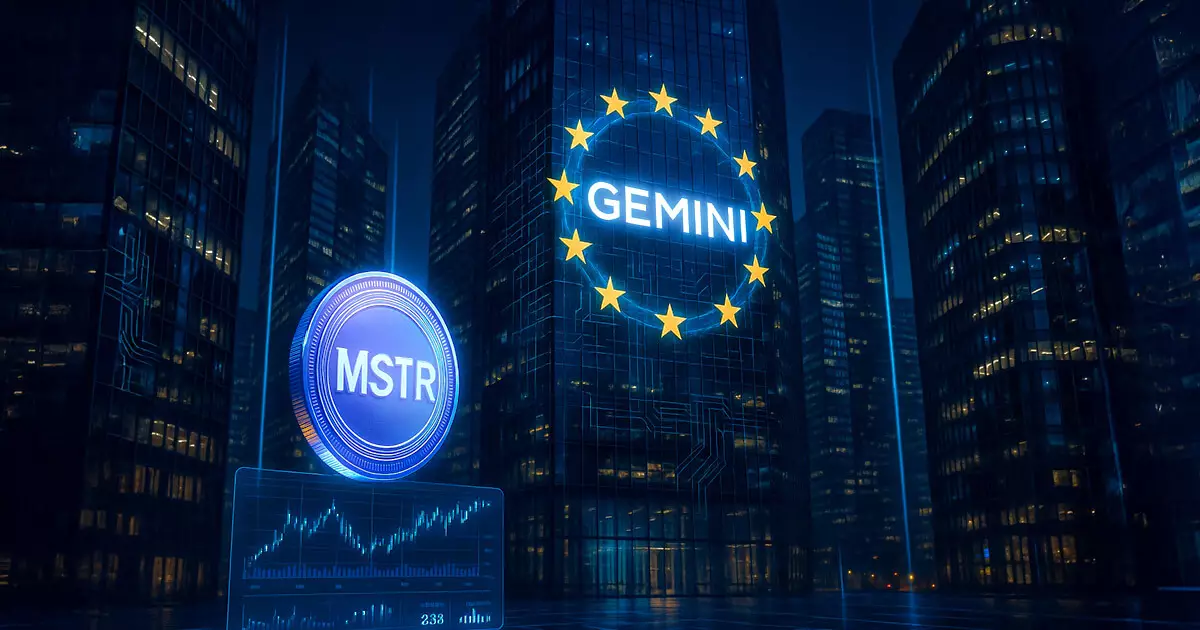Gemini’s recent introduction of tokenized Strategy (MSTR) shares to European customers marks a pivotal moment in the ongoing clash between traditional financial markets and blockchain innovation. By allowing ownership of fractional U.S. equities via on-chain tokens, Gemini provides a striking example of how legacy financial instruments can be reengineered to align with demands for transparency, accessibility, and liquidity. But beneath the excitement lies a calculated effort to disrupt entrenched financial gatekeeping, breaking open borders and offering a genuine alternative to the bureaucratic clunkiness of conventional stock exchanges.
This move is not just a gimmick for tech enthusiasts; it’s a purposeful attempt to democratize wealth creation and challenge the notion that investing in U.S. equities requires expensive intermediation or proximity to major financial hubs. By leveraging blockchain networks like Arbitrum, Gemini is crafting a new digital highway for global investors traditionally sidelined by high currency conversion fees and regulatory barriers.
Tokenization’s Double-Edged Promise
Tokenized stocks sound revolutionary, providing fractional ownership, reduced transaction friction, and 24/7 on-chain settlement, but the reality demands scrutiny. While the offer of economic rights equivalent to underlying shares—where regulatory environments allow—is laudable, the true test will be real-world enforcement and clarity on jurisdictional protections. The blockchain appeal should not overshadow the complex legal and custodial frameworks still required to ensure investor safety. There is a tangible risk of overselling tokenization as a cure-all, when pitfalls like regulatory ambiguity and counterparty risks persist.
Nonetheless, Gemini’s compliance-focused approach signals a mature attempt to balance innovation with responsibility. By staging this rollout within well-regulated markets, they attempt to preempt negative regulatory interventions that might cripple less cautious players. This methodical progression may well be necessary for blockchain’s integration into mainstream finance, rather than the reckless disruption that others have pursued.
Why Democratization Requires More Than Technology
The dream of “anyone with a smartphone” accessing U.S. stocks on a blockchain is optimistic, but far from guaranteed. Technology can reduce transactional barriers, but the real obstacle is establishing trust and clarity among retail investors unused to navigating digital asset custody, wallet security, and token interoperability. The allure of fractional shares and borderless portfolios will only materialize if market participants are adequately educated and protected.
Moreover, the broader financial ecosystem must evolve to accommodate these hybrid assets, including clearinghouses, tax authorities, and brokerage firms. Blockchain alone cannot fix market inefficiencies without this systemic adaptation. Thus, Gemini’s initiative should be commended for pushing the envelope—it challenges regulators and institutions to rethink the rules rather than merely reproduce conventional models on new ledgers.
Center-Right Reflections: Innovation with Prudence
From a center-right liberal viewpoint, Gemini’s strategy appropriately blends free-market innovation with pragmatic regulatory foresight. It embodies the entrepreneurial spirit by opening new investment avenues while respecting the need for legal compliance and risk management. Such an approach recognizes that financial innovation must not come at the expense of investor protection or market stability.
Importantly, tokenized equities also align with conservative ideals of expanding opportunity and competition. By lowering entry barriers and increasing choice, Gemini promotes individual financial empowerment without relying on government redistribution. However, this empowerment carries responsibility; investors must remain vigilant about the novel risks embedded in digital asset structures.
The Future of Equity Access Is Not Inevitable—It’s Contentious
Gemini’s rollout is a harbinger of a future where traditional equities are not confined to conventional markets but decoupled into modular digital tokens on diverse blockchain platforms. However, this future is neither guaranteed nor without controversy. Success depends on the willingness of regulators to accommodate these new frameworks, of market participants to embrace them, and of innovators to persist with measured diligence.
The fusion of conventional finance with blockchain technology promises enormous benefits but demands a realistic appreciation for the complexity involved. Gemini’s example serves as both inspiration and caution—the path to redefining global equity access will require boldness tempered by wisdom.

